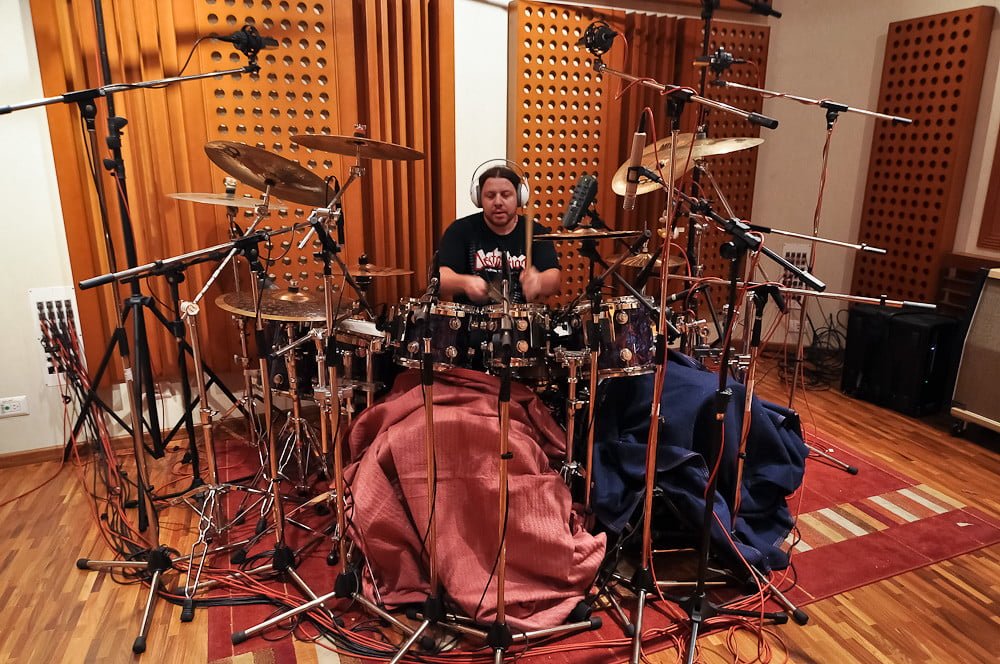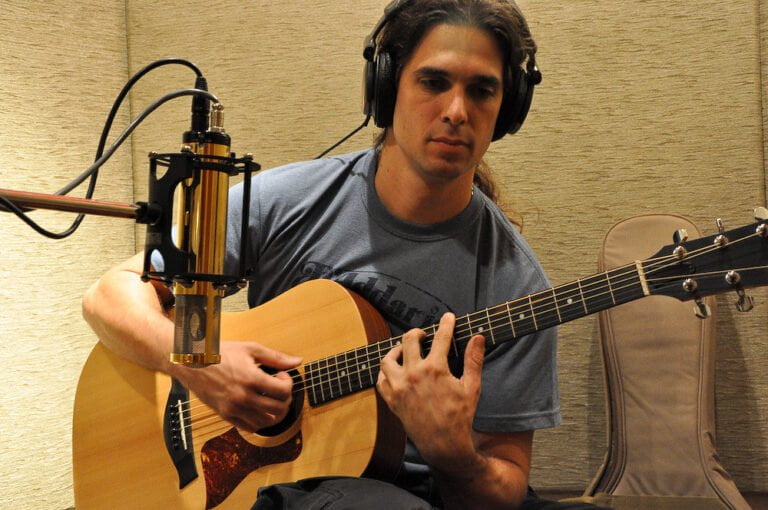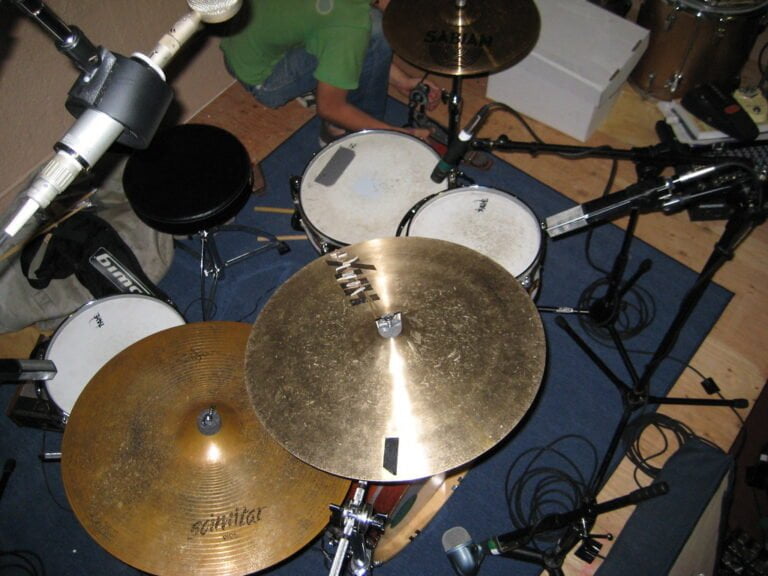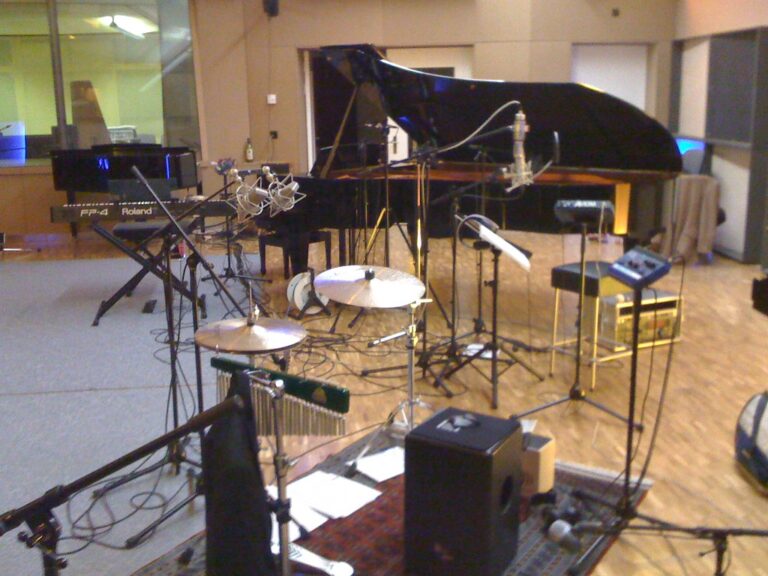Multi-Microphone Drum Recording: Capturing Depth and Dimension
When it comes to multi-microphone drum recording, the key lies in capturing depth and dimension to elevate the overall sound quality. Strategic placement of various microphones around the drum kit is essential for picking up the intricate details and dynamics of the performance, which can truly transform the listening experience. By exploring techniques like ambient miking, room mic positioning, and meticulous processing, engineers can craft a rich and immersive drum mix that resonates with the audience. The art of multi-microphone drum recording holds the potential to release a world of sonic possibilities, taking your tracks to a whole new level.
We are supported by our audience. When you purchase through links on our site, we may earn an affiliate commission, at no extra cost for you. Learn more.
Benefits of Multi-Microphone Drum Recording
Utilizing multiple microphones in drum recording enhances the depth and clarity of the drum set’s nuances, allowing for precise shaping of the sound in subsequent mixing and mastering stages. When it comes to capturing the entire drum kit, a combination of close mics, ambient mics, and room mics plays a vital role. Close mics are positioned near individual drum elements like the kick, snare, and toms to capture their detailed tonal characteristics and transient response accurately. On the other hand, ambient mics pick up the overall sound of the room, adding natural reverberation and depth to the recordings.
Essential Microphone Placement Techniques
To achieve ultimate drum sound quality, strategic placement of microphones is crucial in capturing the nuances and dynamics of the drum set. When considering mic placement techniques for recording drums, several key factors come into play to guarantee ideal results:
- Utilize cardioid polar pattern mics: Position microphones with a cardioid polar pattern strategically to focus on the specific elements of the drum kit you want to highlight.
- Experiment with stereo image: Play around with microphone placement to create a rich stereo image that captures the full breadth of the drum set.
- Consider room sound: Incorporate room sound by placing microphones in areas that enhance the natural acoustics of the recording space.
- Try stereo ribbon mic for depth: Introduce a stereo ribbon mic setup to add depth and dimension to the overall drum sound, especially when aiming for a more vintage or ambient vibe.
When recording drums, pay special attention to mic placement around the snare drum to capture its crispness and articulation. Additionally, after setting up the microphones, remember the importance of applying EQ and compression techniques, along with high-pass/low-pass filtering and phase alignment, to refine the sound further and bring out the best in your drum recordings.
Achieving Depth With Overhead Mics
When setting up overhead mics for drum recording, positioning them in a triangle shape can effectively capture the overall drum set with depth and dimension. The use of overhead mics like the Shure KSM44A provides an encompassing sound that brings out the nuances of each drum element. Additionally, implementing the Glyn Johns method, which involves placing three mics equidistant from the snare at 11 o’clock and 3 o’clock, contributes to a balanced stereo image, enhancing the spatial perception of the drums.
To further enhance depth and dimension in drum recordings, utilizing ribbon mics such as the AEA R88 MkII or Royer SF-12 can capture the room sound, adding a cohesive feel to the overall mix. These mics excel at capturing the ambient characteristics of the recording space, providing a sense of realism and depth to the drum tracks.
Incorporating spaced cardioid mics above the drums in XY or M-S configurations can create a wide stereo field, enriching the sonic landscape with depth and dimension. This technique helps in achieving a more immersive experience for the listeners, making them feel like they are in the room with the drum kit. By strategically placing and utilizing overhead mics in various configurations, drum recordings can achieve a sense of depth and dimension that elevates the overall sound quality and listener experience.
Utilizing Room Mics for Dimension
Room mics play an important role in adding natural reverberation and reflections to drum recordings, enhancing depth and dimension by capturing the ambient sound of the recording space. When using room mics for drum recording, several key considerations come into play:
- Ambient Sound Capture: Room mics are designed to capture the natural ambience of the recording environment, providing a sense of space and depth to the drums.
- Strategic Placement: Proper placement of room mics is vital to achieving the desired sound. Experimenting with different distances and angles can help capture the room’s unique acoustics.
- Mic Selection: Choosing the right microphone for the room can have a significant impact on the final sound. Different microphones have varying frequency responses and polar patterns that can influence the overall tone and character of the recording.
- Immersive Experience: Utilizing room mics effectively can create an immersive listening experience by adding a sense of realism and envelopment to the drum mix.
Mixing Tips for Multi-Microphone Drum Recording
Incorporating advanced mixing techniques is key to refining the multi-microphone drum recordings for ideal clarity and depth. When working with multi-microphone setups in drum recording, it’s important to pay attention to phase alignment. Ensuring that all the microphones are in phase with each other helps prevent any cancellation issues and results in a more balanced and cohesive sound. Additionally, utilizing EQ and compression is essential in shaping the overall drum sound. By cutting frequencies that muddy the mix and applying heavy compression to enhance the groove, you can achieve a more polished and professional sound.
Balancing ambient mics with close mics is another critical aspect of multi-microphone drum recording. Ambient mics add depth and character to the drum sound, providing a sense of space and realism. Experimenting with different ambient miking techniques and processing methods can yield unique and creative results, enriching the overall sonic texture.
Furthermore, employing high-pass and low-pass filtering can help shape the tone of the recordings, removing unwanted rumble or harsh frequencies. When using overhead miking, consider utilizing a stereo microphone setup to capture the width and depth of the drum kit accurately.







